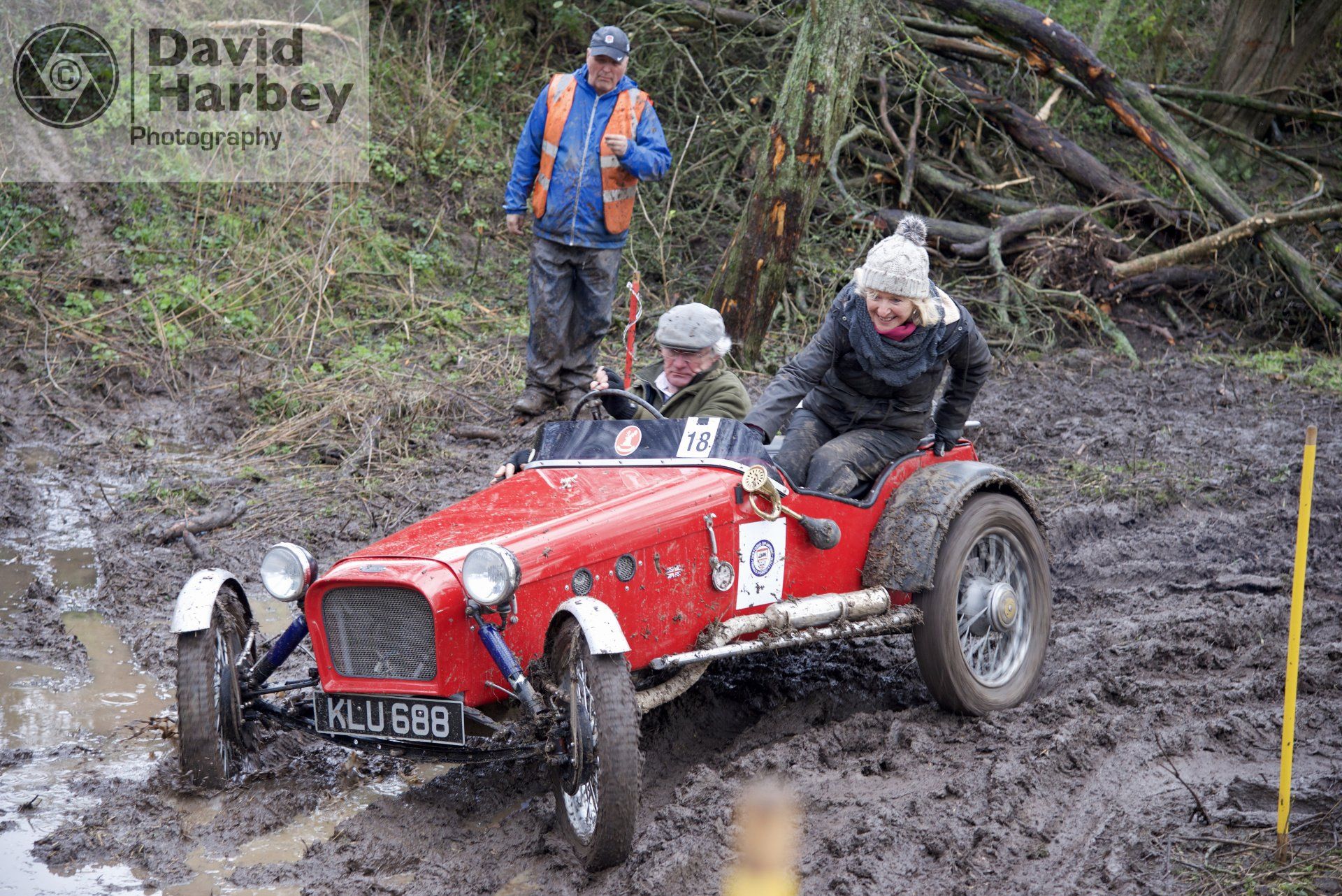Sywell Historic Sporting Trial
It’s motorsport, Jim, but not as we know it !
Motorsport enthusiasts may be familiar with sporting trials vehicles, strange looking things, with passengers that are often seen bouncing up and down as they attempt to drive up impossibly steep and muddy slopes.

In truth, it is a simple challenge – drive the route set out by the organisers keeping the scoring poles to the right side and aiming to get as far as possible to achieve the lowest score on each observed section.

The winners are the crew with the lowest score. It might almost be described as motorsport in slow motion …

For my first experience of Sporting Trials, having read about them over the years in the motorsport press, I headed through the drizzle to a field opposite Sywell Aerodrome just north of Northampton.

The event was the Sywell Historic Sporting Trial organised by the Midlands Trial Car Club.

A relatively recent development, the aim of the Historic Sporting Trials
movement is to provide suitable events in which the sporting trial cars of the 1960’s and middle 1970’s can compete.

The observed sections are designed to suit the earlier Historic Class cars equipped with fiddle brakes.

Modern sporting trials vehicles compete in the BTRDA championship and their website includes a useful introduction to the discipline - BTRDA.

It is true grassroots motorsport – the “paddock” if there is one is the area of the field near the catering van and the booth where the results are collated.

For the spectator or photographer, access is brilliant albeit that it can mean coping with muddy, slippery conditions.

Crews tackle each section one at a time and a marshal will confirm how far through the section they have progressed. Crews will typically walk the section to decide on the best route.

Providing you are sensible, you can stand where you want, but take care – the wrong place can leave you splattered with mud. I used my 24-120mm zoom lens all day which gave the ideal range.

What is also really good for the photographer is the lack of helmets so the crew’s faces are fully visible. These vary from immense degrees of concentration, the stoical “we are going to get to the end of the section” to the joy of successful completion.

It also became apparent that there was some considerable experience on display. Sometimes, the quiet, unspectacular run was the one that cleaned the section rather than the louder, engine revving, wheel spinning attempt firing mud in all directions and which could result in heroic failure !

I will certainly be aiming to get to some more sporting trials in the future.

Thanks for taking the time to read this article and a big thank you to David Harbey Photography
for the images and words. If you have enjoyed this article please hit the like and share buttons below, I thank you.

